Chromic acetate
- CAS NO.:1066-30-4
- Empirical Formula: C2H4CrO2
- Molecular Weight: 112.05
- MDL number: MFCD00036429
- EINECS: 213-909-4
- SAFETY DATA SHEET (SDS)
- Update Date: 2024-12-18 14:07:02
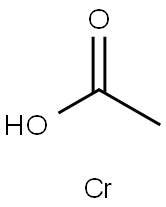
What is Chromic acetate?
Description
Chromic acetate is a gray-green powder orblue-green pasty mass. Molecular weight =229.15 (anhydrous), 247.16 (hydrate); Specific gravity (H2O:1) =1.30;Boiling point =100℃ (aqueous solution). HazardIdentification (based on NFPA-704 M Rating System):Health 1, Flammability 0, Reactivity 0. Soluble in water.Chromic acetate is a gray-green powder orblue-green pasty mass. Molecular weight = 229.15 (anhydrous), 247.16 (hydrate); Specific gravity (H2O:1) 5 1.30;Boiling point = 100℃ (aqueous solution). HazardIdentification (based on NFPA-704 M Rating System):Health 1, Flammability 0, Reactivity 0. Soluble in water.
Chemical properties
Chromic acetate is a gray-green powder or blue-green pasty mass
The Uses of Chromic acetate
Textile mordant, tanning, polymerization and oxidation catalyst, emulsion hardener.
General Description
A grayish green to bluish green powder. The primary hazard is the threat to the environment. Immediate steps should be taken to limit its spread to the environment. Chromic acetate is used in tanning and in textile dyeing.
Air & Water Reactions
Water soluble.
Reactivity Profile
Chromic acetate gives aqueous solutions that are basic (neutralize acids). These neutralizations generate only a little heat. Neither a strong reducing agent nor oxidizing agent, but can serve as both.
Hazard
Toxic by ingestion.
Health Hazard
INHALATION: Irritating. It can produce ulcerations in the respiratory system, perforation of the nasal septum, pneumonitis and bronchial carcinoma. EYES: Irritation. SKIN: May cause dermatitis to exposed skin. Can produce ulcerations and sensitizing reactions.
Flammability and Explosibility
Non flammable
Safety Profile
Questionable carcinogen with experimental tumorigenic data. Moderately toxic by intravenous route. Human mutation data reported. See also CHROMIUM COMPOUNDS. When heated to decomposition it emits acrid smoke and irritating fumes.
Potential Exposure
Chromic acetate is used to fix certain textile dyes; to harden photographic emulsions in tanning, and as a catalyst
First aid
If this chemical gets into the eyes, remove anycontact lenses at once and irrigate immediately for at least15 min, occasionally lifting upper and lower lids. Seek medical attention immediately. If this chemical contacts theskin, remove contaminated clothing and wash immediatelywith soap and water. Seek medical attention immediately. Ifthis chemical has been inhaled, remove from exposure,begin rescue breathing (using universal precautions, including resuscitation mask) if breathing has stopped and CPR ifheart action has stopped. Transfer promptly to a medicalfacility. When this chemical has been swallowed, get medical attention.
storage
Color Code—Blue: Health Hazard/Poison: Storein a secure poison location. Prior to working with Chromicacetate you should be trained on its proper handling andstorage. Store in tightly closed containers in a cool, wellventilated area. A regulated, marked area should be established where Chromic acetate is handled, used, or stored. Aregulated, marked area should be established where thischemical is handled, used, or stored in compliance withOSHA Standard 1910.1045.
Shipping
UN3288 Toxic solids, inorganic, n.o.s., Hazard Class: 6.1; Labels: 6.1-Poisonous materials, Technical Name Required.
Incompatibilities
Contact with strong oxidizers may cause fire and explosion hazard
Waste Disposal
Dilute and stir in excess soda ash. Let stand, neutralize liquid and flush to sewer. Dispose of sludge in landfill.
Properties of Chromic acetate
| Density | 1,28 g/cm3 |
| storage temp. | 4°C, protect from light |
| solubility | slightly soluble in H2O |
| form | Powder |
| color | green |
| Specific Gravity | 1.28 |
| Water Solubility | slightly soluble |
| CAS DataBase Reference | 1066-30-4(CAS DataBase Reference) |
| EPA Substance Registry System | Chromium(III) acetate (1066-30-4) |
Safety information for Chromic acetate
Computed Descriptors for Chromic acetate
New Products
3-Iodophenylacetic acid 3-Pyridineacetonitrile, α-hydroxy- 2-Propanamine, 1-chloro-, hydrochloride (9CI) 3-(hexyloxy)-4-(pyridin-3-yl)-1,2,5-thiadiazole 2-Hexyn-1-ol Dibenzo-18-crown-6 Nickel(II) perchlorate hexahydrate, 98% 4-Bromophenylacetonitrile, 95% 3-Bromo-4-fluoroaniline, 97% Sodium tetraborate decahydrate, 98% Palladium(II) acetate, trimer, Pd 99% 4-Bromo-2-chlorotoluene, 97% N N Dimethylformamide Dimethyl Acetal (Dmf Dma) 2,3-Dichloro Benzoyl Cyanide [Side Chain] Bis(2-Chloroethyl) Amine Hydrochloride L-Glutamic Acid Diethyl Ester Hydrochloride 5-(Difluoromethoxy)-2-Mercaptobenzimidazole 1-Ethyl-3-(3-Dimethylaminopropyl)-Carbodiimide Hydrochloride [EDC Hcl] 1,4-Napthoquinone Bromoiodomethane Sodium Bicarbonate Methylene Dichloride (MDC) Ethyl Acetate Indole-3-Carbinol (I3C)Related products of tetrahydrofuran
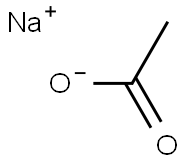
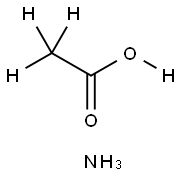
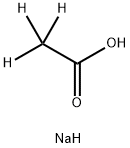
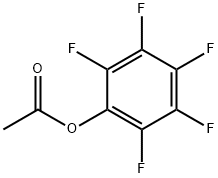




You may like
-
 CHROMIUM ACETATE 99%View Details
CHROMIUM ACETATE 99%View Details -
 Chromium acetate CAS 1066-30-4View Details
Chromium acetate CAS 1066-30-4View Details
1066-30-4 -
 CHROMIC ACETATE Extra Pure CAS 1066-30-4View Details
CHROMIC ACETATE Extra Pure CAS 1066-30-4View Details
1066-30-4 -
 17604-74-9 3-Pyridineacetonitrile, α-hydroxy- 98+View Details
17604-74-9 3-Pyridineacetonitrile, α-hydroxy- 98+View Details
17604-74-9 -
 Cyclohexane, (2-propynyloxy)- 67967-07-1 98+View Details
Cyclohexane, (2-propynyloxy)- 67967-07-1 98+View Details
67967-07-1 -
 2-Propanamine, 1-chloro-, hydrochloride (9CI) 98+View Details
2-Propanamine, 1-chloro-, hydrochloride (9CI) 98+View Details
5968-21-8 -
 3-Iodophenylacetic acid 1878-69-9 98+View Details
3-Iodophenylacetic acid 1878-69-9 98+View Details
1878-69-9 -
 132945-75-6 (S)-1-Boc-3-methanesulfonyloxy-pyrrolidine 98+View Details
132945-75-6 (S)-1-Boc-3-methanesulfonyloxy-pyrrolidine 98+View Details
132945-75-6
